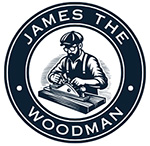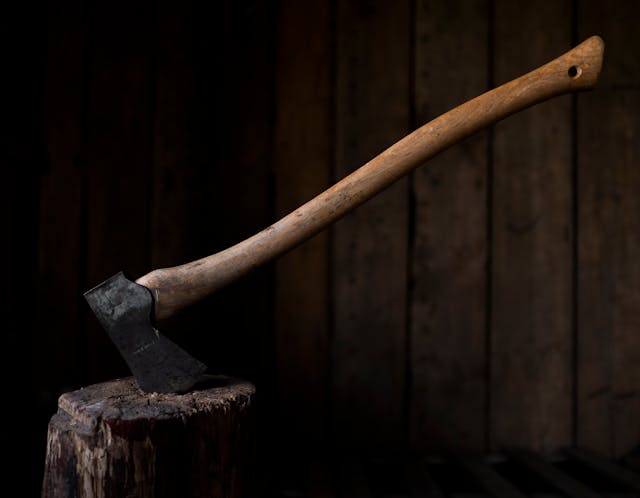When choosing a wooden cutting board, most people focus on aesthetics, size, or whether it’s made from a sustainable material. While these are important factors, one of the most critical — and often overlooked — considerations is the Janka hardness rating of the wood. This technical term might sound like something reserved for flooring experts or carpenters, but it plays a major role in how well your cutting board will perform over time. Whether you’re a casual home cook or a professional chef, understanding the Janka hardness rating can help you select the right cutting board for durability, safety, and long-term value.
What is the Janka Hardness Rating?
The Janka hardness rating measures the resistance of a piece of wood to denting and wear. Specifically, it’s a standardized test that determines how much force is required to embed a 0.444-inch steel ball halfway into the wood. The result is expressed in pounds-force (lbf) in the United States and in newtons (N) or kilograms-force (kgf) in other parts of the world.
This test provides an objective way to compare the hardness of various wood species. A higher Janka rating indicates a harder wood that is more resistant to dents, scratches, and impacts. Conversely, a lower rating means the wood is softer and more prone to surface damage.
The Janka scale is widely used in industries like flooring, furniture, cabinetry, and yes — even cutting boards.
Why Does Janka Hardness Matter for Cutting Boards?
Cutting boards are subject to constant mechanical stress. Every chop, slice, or cleave applies pressure to the wood’s surface. Over time, this wear accumulates and affects the cutting board’s condition and performance.
Here’s why the Janka hardness rating is so important when selecting a cutting board:
- Durability: Harder woods resist denting and knife marks better than softer woods.
- Maintenance: Softer woods may require more frequent sanding, oiling, or replacement.
- Knife preservation: Ironically, overly hard woods can dull your knives more quickly.
- Hygiene: Deep cuts in soft boards can harbor bacteria, making cleaning more difficult.
By choosing a cutting board with the appropriate Janka hardness rating, you strike the right balance between durability and knife-friendliness.
What is an Ideal Janka Rating for a Cutting Board?
For most cutting boards, a Janka rating between 900 and 1,500 lbf is considered optimal. This range provides enough hardness to resist damage while still being gentle on knife blades. Going too low or too high outside this range can cause performance issues.
Let’s break it down:
- Too Soft (Below 900 lbf): Woods like pine (Janka rating ~380 lbf) and cedar (~900 lbf) may be too soft for regular use. They dent easily, which shortens the lifespan of your board and creates crevices where bacteria can grow.
- Too Hard (Above 1,500 lbf): Woods such as Brazilian cherry (~2,350 lbf) or hickory (~1,820 lbf) are extremely hard. While these may seem appealing for longevity, they can dull your knives more rapidly and feel overly rigid when chopping.
Thus, the “sweet spot” falls between 900 and 1,500 lbf — hard enough for durability, but soft enough to protect your tools.
Common Woods and Their Janka Ratings
Let’s take a closer look at some popular cutting board woods and how they rank on the Janka scale:
- Maple (Hard) – 1,450 lbf: One of the most popular cutting board materials, hard maple strikes a great balance between hardness and workability. It’s durable and gentle on knives.
- Walnut – 1,010 lbf: Slightly softer than maple, walnut is still sufficiently hard for daily use. It also offers a rich, dark tone that appeals to many home cooks.
- Cherry – 995 lbf: Cherry is just under the ideal range, but still usable. It has a smooth finish and deepens in colour over time.
- Teak – 1,070 lbf: Known for its natural oils and water resistance, teak is popular in humid environments. However, it’s a bit more abrasive on knives due to silica content.
- Bamboo – 1,380 lbf (approx.): Technically a grass, not wood, bamboo is compressed into boards and rates well on the Janka scale. It’s hard and eco-friendly, though some find it tough on blades.
End Grain vs. Edge Grain: Does Janka Still Matter?
Cutting boards come in two primary constructions: end grain and edge grain. While the Janka rating still applies, the way the wood fibers are oriented affects how the board behaves under pressure.
- End Grain Boards: These boards show the cross-section of the wood fibers and are often considered the gold standard for professional use. They “self-heal” from cuts and are more gentle on knives. The Janka rating still matters, but end grain construction absorbs knife impact better regardless of wood type.
- Edge Grain Boards: These display the side of the wood fibers and are more rigid and affordable. Here, the Janka rating plays a bigger role, since there’s less give under the knife.
So, while construction method matters, combining it with the right wood species (based on Janka hardness) ensures the best overall performance.
Beyond Hardness: Other Factors to Consider
While Janka hardness is critical, it’s not the only factor to consider when selecting a wooden cutting board. Here are a few additional considerations:
- Grain Tightness: Tighter grain patterns (like those in maple) help prevent bacteria and moisture absorption.
- Porosity: Less porous woods are more hygienic and easier to clean.
- Finish: A well-finished board with food-safe mineral oil or beeswax helps extend its life.
- Sustainability: Responsibly sourced wood not only benefits the planet but also reflects higher manufacturing standards.
Understanding the Janka rating in context with these factors will help you make a well-rounded and informed choice.
Final Thoughts: Matching the Board to the User
There’s no one-size-fits-all cutting board. A home cook who prepares occasional meals may not need the same level of durability as a chef using the board all day in a commercial kitchen. The key is to match the board’s material — and its Janka hardness — to your specific needs.
If you want a board that resists deep cuts and lasts for years without prematurely wearing down your knives, look for wood types within the 900–1,500 lbf range. Whether it’s maple for its balance, walnut for its aesthetics, or teak for its resistance to moisture, a board made from properly rated wood will serve you well.
By considering the Janka hardness rating, you’re not just choosing a cutting board — you’re investing in a reliable kitchen companion that performs safely and beautifully for years to come.

